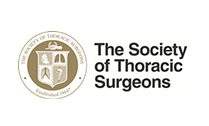Robotic Thoracic Surgery
Robotic thoracic surgery is a newer surgical approach which greatly enhances the surgeon's visualization of the operative field, precision, and control compared to the traditional "open" surgery approach. Robotic-assisted surgeries are being widely employed in the management of various surgical conditions across different specialties. Thoracic surgeons are using the robotic system for lung cancer and esophageal surgeries.
In the traditional surgical approach, thoracic surgeons make a large chest incision and spread or cut the ribs to access the thoracic cavity to perform the surgery. With robotic thoracic surgery, the surgeon makes small 1 cm incisions in the same rib space to perform a thoracic surgery, for example a lobectomy (lung lobe removal), without spreading or cutting the breastbone or ribs, thereby minimizing blood loss, pain and scarring.
Benefits of robotic thoracic surgery over traditional thoracic surgery include:
- Shorter hospital stay
- Less pain and scarring
- Less risk of infection
- Less blood loss and fewer transfusions
- Faster recovery
- Quicker return to normal activities
- No cutting of the ribs or sternum (breastbone)
During robotic thoracic surgery, our surgeons use the da Vinci® Surgical System, a robotic device that allows the surgeons to access the chest cavity and perform the procedure through smaller incisions. The da Vinci robotic system is among the most effective and least invasive techniques which ensures faster recovery with minimal pain and also reduces the risks associated with traditional open surgery.
The da Vinci surgical system consists of a surgeon's console, a patient-side cart with four interactive robotic arms, a high-performance vision system (3D camera) and miniaturized EndoWrist surgical instruments.
While performing the surgical procedure, your surgeon will be seated at the da Vinci console with the help of which he is able to view a magnified, high-resolution 3D image of the area to be operated. Your surgeon would then introduce miniaturized EndoWrist instruments through few tiny incisions, to access the surgical site. These instruments help your surgeon perform the procedure with precision and control. Your surgeon uses master controls which function similar to forceps and translate the surgeon's directions into precise movements of miniaturized instruments.
- da Vinci® Surgery Patient Stories
- da Vinci® Thymectomy
- da Vinci® Lobectomy
- Surgeon Locator Sell Sheet
- Procedure Brochure Lobectomy
- Brochure Patient Lobectomy Tri Fold





















